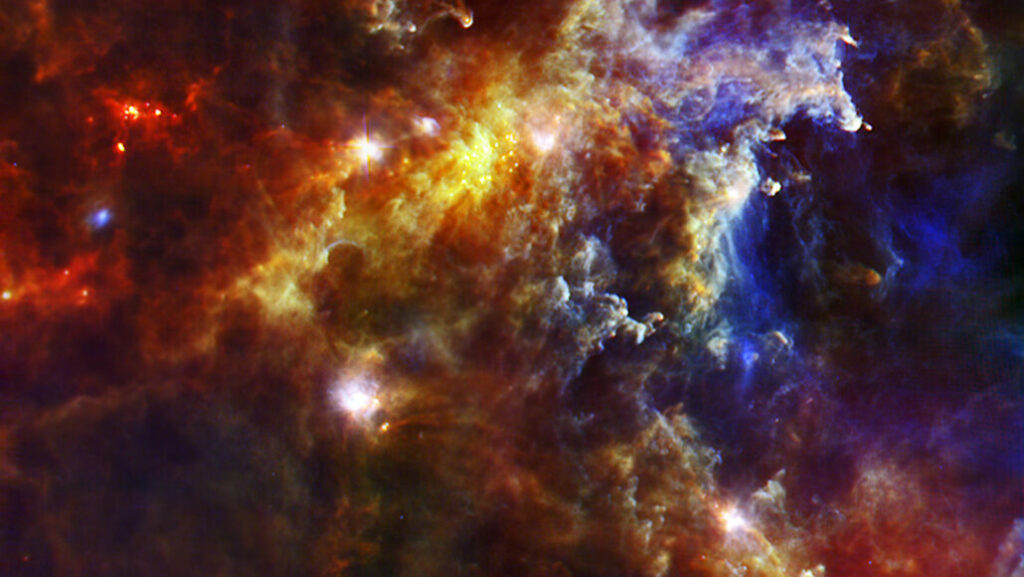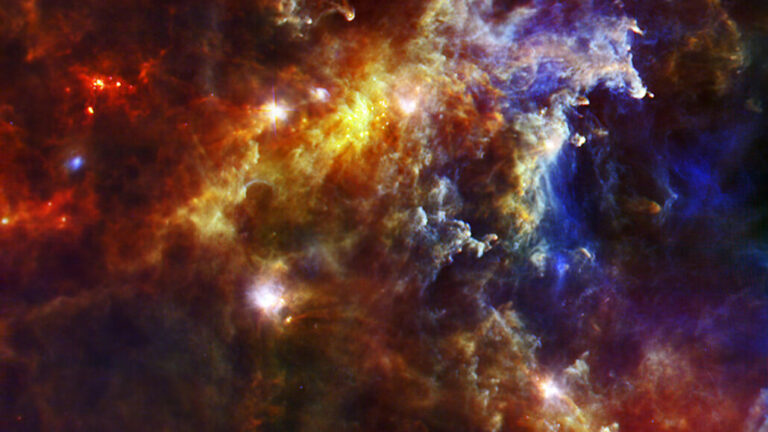Astronomers Suggest the Milky Way Could Be Creating More Stars Than Previously Believed
Gamma rays reveal the galaxy’s star-making power
A new study suggests that the star formation rate in the Milky Way is much higher than previously believed. The research, which analyzes gamma rays emitted from aluminum-26, a radioactive isotope created by massive stars, shows that the Milky Way creates 4 to 8 solar masses of new stars annually from interstellar gas and dust. This estimate is two to four times higher than the conventional estimate, meaning that the Milky Way may give birth to 10 to 20 stars each year, given that most stars are smaller than the sun. The study was submitted to arXiv.org on January 24.

HOBYS KEY PROGRAMME CONSORTIA/PACS & SPIRE CONSORTIUM/ESA
According to a recent estimate of the star formation rate in our galaxy, the Milky Way is producing more stars than previously believed. Researchers, who submitted their findings to arXiv.org on January 24, found that the galaxy generates four to eight solar masses of interstellar gas and dust into new stars each year, as revealed by gamma rays from the radioactive isotope aluminum-26, primarily arising from massive stars. This range is two to four times the conventional estimate, resulting in an annual birthrate of about 10 to 20 stars in our galaxy, as most stars are less massive than the sun. Every million years, the galaxy creates 10 million to 20 million new stars, filling approximately 10,000 star clusters like the Pleiades cluster in Taurus.
This stands in contrast to many galaxies, including most of those that orbit the Milky Way, which do not produce any new stars. The amount of stars a galaxy makes is essential to understanding its evolution since the faster it enriches itself with elements such as oxygen and iron, the greater its effect on the gas clouds that create both large and small stars. The researchers calculated the observed intensity and spatial distribution of emission from aluminum-26 in our galaxy, an isotope created by a massive star during its life and death. During its lifetime, the star blows the aluminum into space via a strong wind, and if it explodes during its death, it creates more aluminum. With a half-life of 700,000 years, the isotope decays and releases gamma rays.
A new estimate of the star formation rate in the Milky Way suggests that it is churning out far more stars than previously thought. Researchers have found that gamma rays from aluminum-26, a radioactive isotope primarily from massive stars, reveal that the Milky Way produces four to eight solar masses of interstellar gas and dust into new stars each year. This range is two to four times higher than the conventional estimate and equates to an annual birthrate in the galaxy of about 10 to 20 stars. This means that every million years, the galaxy spawns 10 million to 20 million new stars. In contrast, many galaxies, including most of the ones that orbit the Milky Way, produce no new stars at all.
Gamma rays penetrate the dust that cloaks the youngest stars, similar to X-rays and unlike visible light. This means that observations through gamma rays provide a full view of the galaxy. The more stars the Milky Way produces, the more gamma rays emerge. The best match with the observations is a star formation rate of four to eight solar masses a year, much higher than the standard estimate of about two solar masses a year.
The revised rate is realistic and is a major step in the correct direction, says Pavel Kroupa, an astronomer at the University of Bonn in Germany. However, it is difficult to determine how far the gamma rays have traveled before reaching us, and it is uncertain if the observed emission is nearby or not. Nonetheless, the Milky Way is the most vigorous star creator in the Local Group of more than 100 nearby galaxies. The high star formation rate of the Milky Way means that it produces far more stars than the largest Local Group galaxy, Andromeda, which only converts a fraction of a solar mass of gas and dust into new stars a year.
Do not forget to share your opinion with us to provide you with the best posts !




0 Comments